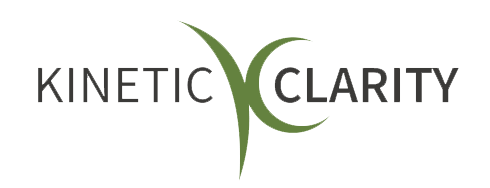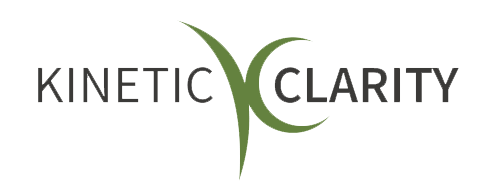Empowering People Leaders: Coaching and Training for Inspirational Leadership
"...to lead with purpose, to inspire with vision, and to empower with courage...

Effective leadership transcends traditional management roles. It involves empowering, guiding, and motivating our teams to surpass their limits and achieve collective excellence. As organizations navigate through technological innovations, shifting market dynamics, and changing workplace cultures, the need for effective leadership is growing. Leaders who inspire confidence, foster innovation, and drive strategic visions forward are in high demand.
Our ability to elevate and evolve as leaders is often not a matter of chance, but a result of deliberate development efforts. These efforts focus on our personal growth and professional capabilities, marking our journey as leaders with continuous adaptation and learning. Each challenge is an opportunity to refine our skills and deepen our understanding, paving the way for leadership that can significantly impact our organization's trajectory.
Today, more than ever, there is a profound opportunity to empower leaders to manage, inspire, and lead with vision and empathy. This article explores the intricate balance of challenges and opportunities in leadership development, proposing robust solutions and actionable strategies. Now is the time to invest in these programs, as they’re crucial for the success and sustainability of your organization.
By investing in tailored coaching and comprehensive training programs, you cultivate leaders equipped to handle today's challenges and prepared to anticipate tomorrow's demands. Let’s examine how we can transform potential into excellence and foster leadership that meets and exceeds the expectations of our dynamic world.
What are the challenges of adapting to rapid organizational changes?
Adapting to rapid organizational changes presents several challenges for leaders. These challenges can test the resilience and adaptability of even the most seasoned professionals, requiring a nuanced approach to navigate successfully. Here, we explore these challenges in detail, understanding their impact and the demands they place on leadership.
1. Keeping Pace with Technological Advancements
One of the most daunting challenges is the rapid pace of technological change. Leaders must not only stay informed about new technologies but also understand how to integrate these advancements into their current systems—all without disrupting existing processes. This requires technical acumen and strategic foresight to assess which technologies will be genuinely beneficial versus fleeting trends.
2. Managing Workforce Dynamics
As the workforce evolves with an influx of diverse generations, values, and expectations, we face the challenge of managing various motivations and communication styles. Younger employees might seek quick advancements and purpose-driven work environments, while older generations may value stability and gradual growth. Balancing these diverse needs and fostering a cohesive work environment is crucial.
3. Navigating Market Volatility
As we all know, market dynamics can shift unexpectedly due to factors like economic downturns, changes in consumer behavior, or new competition. As leaders, we’re called to guide our organizations through these shifts, making decisions that balance short-term survival and long-term growth. This requires a deep understanding of the industry and market, coupled with the ability to make decisions under pressure.
4. Maintaining Organizational Culture During Change
Significant changes can strain an organization's culture, whether due to mergers, acquisitions, or internal restructuring. Preserving core values and a sense of identity while ensuring that the culture evolves appropriately is a delicate balance. We must act as the guardians and innovators of culture, ensuring that changes enhance rather than dilute the organizational ethos.
5. Communicating Effectively Across All Levels
Effective communication becomes even more critical during times of change. The key is to ensure that every team member, from executives to entry-level employees, understands the rationale behind changes and their roles within this new framework. Miscommunications can lead to resistance, confusion, and decreased morale, undermining the potential benefits of change.
6. Ensuring Continuous Learning and Adaptability
Finally, we leaders must embrace continuous learning to adapt our strategies and leadership styles as situations evolve. This requires humility and the willingness to seek feedback so we can learn from our successes and failures.
Each of these challenges, while demanding, also offers the opportunity to strengthen our leadership skills and enhance organizational resilience. By addressing these challenges head-on, you can guide your team through uncertainty and encourage an environment that not only adapts to but thrives in the face of rapid changes.
What opportunities are there in constant change?
Now that we know the challenges let's explore something much more pleasant. Constant change, while challenging, offers numerous opportunities for us to innovate, grow, and lead our organizations to new heights.
1. Innovation and Creativity
Constant change pushes organizations to think creatively and innovate. This can lead to the development of new products, services, or processes that improve efficiency and competitiveness. Leaders can harness this pressure as a catalyst for innovation, encouraging your teams to experiment and take calculated risks.
2. Enhanced Flexibility and Agility
The necessity to adapt quickly to changing conditions develops an organization's agility. Cultivating a flexible work environment enables our teams to respond swiftly to market changes, customer needs, and new opportunities. This agility becomes a significant competitive advantage, allowing the organization to pivot effectively when necessary.
3. Talent Development and Engagement
Change provides a unique opportunity for personal and professional development. As we navigate new challenges with our teams, we acquire skills that may not have been emphasized in a more static environment. This ongoing development can lead to higher levels of employee engagement as team members feel more valued and see firsthand their growth potential within the company.
4. Strengthened Resilience
Navigating through constant change builds resilience within both leaders and our teams. Adapting to uncertainty and setbacks prepares our organization to handle future challenges more effectively. Resilient leaders and teams are better equipped to maintain operational stability and confidence, even in fluctuating conditions.
5. Cultural Reinforcement and Evolution
Change forces organizations to reassess and sometimes redefine their cultural values and practices. This can be a powerful moment to strengthen the organizational culture by aligning it more closely with the current needs and goals of the business. It provides a platform for leaders to reinforce behaviors that support adaptability, innovation, and collaboration.
6. Expanded Market Opportunities
With change often comes the chance to explore new markets or expand existing ones. We can guide our organizations to capitalize on these opportunities by adjusting their business models or strategies to meet emerging demands. This can lead to growth and expansion that might not have been possible in a static environment.
7. Improved Competitive Advantage
Organizations that successfully manage and adapt to change can achieve a substantial competitive advantage. By being first to market with new innovations, adapting quickly to regulatory changes, or simply being more attuned to the shifting preferences of consumers, companies can outpace their competitors and capture greater market share.
Each of these opportunities addresses the challenges posed by rapid change and turns potential threats into avenues for growth and improvement. When we embrace these opportunities, we foster a culture of continuous adaptation and innovation, ensuring that our organizations survive and thrive in an ever-changing world.
5 Practical Solutions to Harness Opportunities in Constant Change
Let's explore practical solutions leaders can implement to harness these opportunities effectively. Here, we’ll talk about actionable strategies designed to empower you and your teams to navigate change confidently and creatively.
1. Implementing Agile Leadership Practices
Adopt agile methodologies that emphasize flexibility, rapid iteration, and continuous feedback.
Action Items:
- Train leaders and teams in agile practices.
- Regularly review and adjust workflows and processes to incorporate feedback and new insights.
- Foster a culture where quick decision-making based on current data is valued.
2. Developing a Continuous Learning Environment
Create programs and initiatives that promote ongoing professional development and skills enhancement.
Action Items:
- Establish learning and development courses that focus on new technologies, market trends, and innovative thinking.
- Encourage cross-departmental training sessions to broaden the perspectives and skills of all employees.
- Provide platforms for knowledge sharing, such as workshops and seminars led by internal or external experts.
3. Enhancing Communication Strategies
Improve the effectiveness of communication to ensure clarity and alignment across all levels of the organization.
Action Items:
- Implement transparent communication channels that facilitate open dialogue and feedback.
- Conduct regular update meetings to keep everyone informed about changes and developments.
- Use collaborative tools to maintain connectivity and engagement, especially in distributed teams.
4. Building Resilient Organizational Cultures
Strengthen the organizational culture by embedding resilience and adaptability into the company’s core values.
Action Items:
- Promote behaviors that support resilience, such as flexibility in work arrangements and support for risk-taking.
- Recognize and reward initiatives that contribute to overcoming challenges or adapting to changes.
- Conduct resilience training workshops to help teams develop coping strategies in changing environments.
5. Fostering Innovation and Risk-Taking
Encourage a culture where innovation is celebrated and reasonable risks are taken to lead change effectively.
Action Items:
- Set up an innovation lab where employees can experiment with new ideas without the fear of failure.
- Provide resources and support for pilot projects that explore new markets or improve current processes.
- Celebrate successes and constructively review the learning points from failures.
Implementing these solutions and action items helps you address the challenges posed by rapid organizational changes and capitalize on the immense opportunities. These strategies ensure that your organization adapts and prospers, paving the way for a future where change is managed and embraced as a catalyst for success and innovation.
Wrapping It Up
As we navigate the complex leadership journey in an ever-changing world, it becomes clear that the path to effective leadership is as dynamic as the environments we operate within. Throughout this article, we have explored the multifaceted challenges of rapid organizational changes and the profound opportunities these changes bring. Our discussion underscores a crucial narrative: change, while inherently challenging, is rich with potential for growth, innovation, and transformation.
As we conclude, let us remember that our ability to adapt and lead through change is not just about reacting to external pressures but about proactively shaping our destiny. By investing in tailored coaching and comprehensive training programs, we prepare ourselves for the current challenges and set the groundwork for anticipating and excelling in the face of future demands.
In this era of perpetual change, let us embrace our role as leaders to transform potential into excellence. By doing so, we ensure that our organizations are not merely reacting to the world around them but actively contributing to and shaping it.
Let this be our call to action: to lead with purpose, to inspire with vision, and to empower with courage. Together, let's forge paths that transcend traditional boundaries and elevate our collective potential in this dynamic world.












